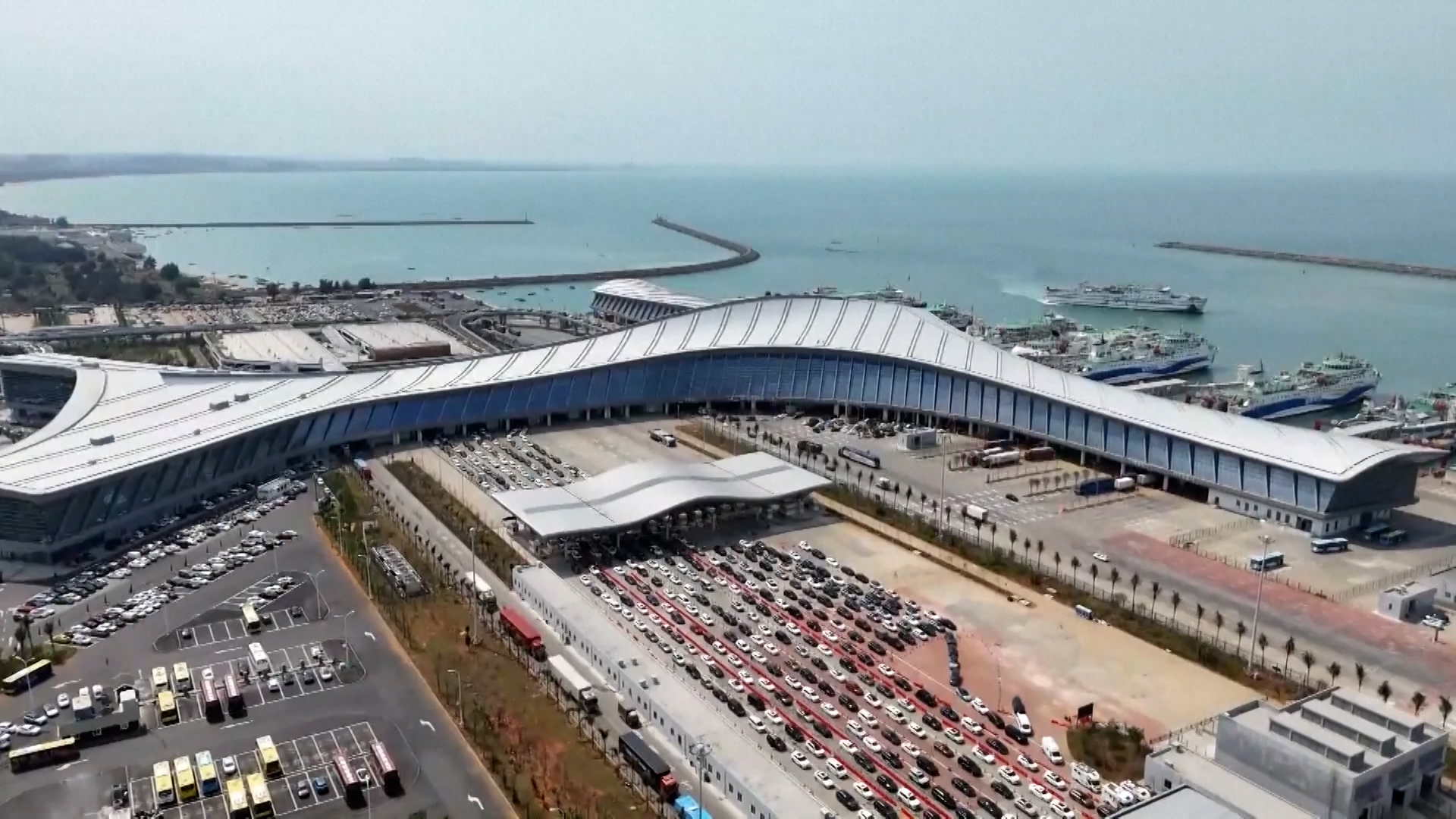Global Tensions and Economic Shifts; U.S. Immigration Policy; China’s Economic Transformation; NATO-Russian Tensions; Middle East Geopolitics

The Impact of H-1B Visa Fee Hike on U.S. Tech and Immigration
Recent events show a significant increase in the H-1B visa fees imposed by the U.S. government, creating ripples across various sectors. According to United Daily News, the U.S. government has raised the H-1B visa application fee to $10,000, a move that could heavily impact the tech industry, particularly startups and small companies. Legal experts argue that this fee hike lacks clarity and preparation time, potentially exacerbating the divide between large corporations and smaller enterprises. While tech giants might absorb these costs, smaller businesses could face severe challenges.
These developments indicate a broader concern within the industry. Another report from United Daily News highlights the confusion and panic among overseas professionals and companies due to the sudden implementation of this fee. The White House clarified that the fee is a one-time charge applicable only to new applicants, not affecting current visa holders or renewals, provided they align with national interests, which could allow for fee waivers.
The news highlights the broader implications for the U.S. economy. Liberty Times emphasizes the reliance of the U.S. tech industry on skilled foreign labor, particularly from India and China. The fee increase, which is 100 times the current rate, could deter companies from hiring international talent, threatening the industry's growth and innovation.
It appears that the sudden policy shift has also affected travel plans. Tencent News reports a surge in flight prices as companies rush to bring their employees back to the U.S. before the new rules take effect. Companies are concerned about the potential delays and complications in the application process, which might impact project timelines and operations.
Overall, the articles collectively portray a landscape of uncertainty and disruption. While the U.S. government seeks to regulate immigration more stringently, the tech industry worries about losing access to global talent, which could have long-term repercussions on its competitive edge.
Diverse Perspectives on Global Peace and Cooperation Initiatives
Recent events highlight various international perspectives on peace and cooperation, as reflected in coverage by Chinese media. CCTV emphasized the Non-Aligned Movement's call for respecting the Treaty of Tlatelolco, underscoring the importance of maintaining peace in Latin America and the Caribbean. This narrative stresses non-interference and self-determination, advocating for peaceful resolutions and rejecting military force.
In contrast, another CCTV article underscores the potential for mutual prosperity between China and the U.S., focusing on diplomatic dialogue and historical cooperation as a foundation for future relations. This piece emphasizes strategic guidance from top leaders and historical wisdom to navigate current challenges, suggesting a cooperative spirit in resolving issues like the TikTok negotiations.
Further, another piece from the same source reflects on President Xi Jinping's advocacy for global governance reforms at the Tianjin Summit, calling for more equitable systems. This article aligns with China's vision of contributing to global stability and development, reinforcing its role as a peace-promoting power.
Meanwhile, an analysis from China's Foreign Ministry critiques the ongoing Israel-Palestine conflict, urging international solidarity to enforce a ceasefire and uphold a 'two-state solution.' This viewpoint highlights the necessity of equitable peace, warning against double standards and emphasizing the equal value of all lives.
These developments indicate varied approaches to international relations, with Chinese media advocating for non-interference, historical cooperation, and equitable governance. The narratives collectively underscore a preference for peaceful dialogue and multilateral cooperation, reflecting China's broader strategic intentions on the global stage.
Escalating Tensions: Russian Military Actions and NATO's Response
Recent events show a marked increase in tensions between Russia and NATO, particularly focusing on airspace violations by Russian military aircraft. According to CCTV, the UK's Royal Air Force has begun patrols over Poland as part of NATO's air defense operations. This move comes after a significant incursion involving numerous drones entering Polish airspace, an action attributed to Russia, although Moscow denies these claims. UK Prime Minister Rishi Sunak highlighted this as a direct threat to European security.
In a related development, United Daily News reports on Russian military aircraft entering Estonian airspace for 12 minutes, which Estonia described as an "unprecedented challenge." This incident occurred shortly after a large number of Russian drones breached Polish airspace, leading NATO to express concern over Russia's testing of its defense responses.
Meanwhile, World Journal describes NATO's activation of the "Eastern Sentry" operation to bolster air defenses in response to these provocations. The UK, Germany, Denmark, and France have all deployed fighter jets as part of this initiative, with British Typhoons conducting patrols over Poland. The UK's Ministry of Defence emphasized the readiness and capability of their forces to respond swiftly to threats.
These developments indicate a significant escalation in military tensions in Eastern Europe, with both Russian provocations and NATO's robust defensive posture underlining the gravity of the situation. The narrative across these publications varies slightly, with CCTV focusing on the UK's commitment to European security, United Daily News highlighting the unprecedented nature of the airspace violation, and World Journal detailing NATO's comprehensive military response. Each outlet underscores the seriousness of the threats while reflecting their respective geopolitical perspectives.
Iran's Temporary Suspension of Cooperation with IAEA: A Geopolitical Analysis
Recent events highlight Iran's decision to temporarily halt its cooperation with the International Atomic Energy Agency (IAEA) following renewed sanctions by European countries. The United Daily News reports that Iran's Supreme National Security Council has announced this suspension in response to the actions of the UK, France, and Germany, who have pushed the UN Security Council to reinstate previously lifted sanctions. This move is seen as a significant setback to ongoing diplomatic efforts, particularly in light of the historic 'snapback' mechanism being employed, which was initially part of the nuclear agreement from 2015.
The narrative from CCTV focuses on Iran's perspective, highlighting the perceived injustice of the European countries' actions. It emphasizes Iran's continued willingness to engage with the IAEA, despite the 'unjust actions' of these countries, which have led to the suspension of cooperation. The report also notes Iran's efforts to negotiate a viable framework for resuming nuclear inspections, underscoring its commitment to national interests amidst international pressure.
These developments indicate a complex geopolitical landscape where Iran is leveraging its nuclear program as a strategic tool amidst international sanctions. While the United Daily News presents a broader geopolitical context, noting the historical significance of the snapback mechanism, CCTV provides a more domestic-focused narrative, underscoring Iran's stance against perceived international overreach. This divergence in reporting reflects differing editorial intentions, with the former offering a more global perspective and the latter focusing on national sovereignty and diplomatic resilience.
Analyzing the Impact of Trump's Immigration Policies on H-1B Visa Holders
Recent developments show that the issue of increased H-1B visa fees has become a hot topic in the U.S. The Sina News article highlights the significant impact of President Trump's executive order, which has sent shockwaves through the immigrant community, especially among Indian nationals. The article describes the urgency felt by those on flights back to the U.S. who received sudden notifications to return immediately to avoid being stranded outside the country. The policy's economic implications are stark, with companies like Amazon and Microsoft issuing urgent advisories to their employees.
These developments indicate a strategic move by Trump to raise substantial revenue through increased visa fees, as detailed in the Sina Finance article. This piece delves into the financial burden placed on companies and the potential economic fallout, with stock prices of many firms plummeting as a result. It appears that Trump's actions aim to curb foreign competition for American jobs, a sentiment echoed across both articles.
The news highlights a broader narrative of economic protectionism and immigration control. While both articles from Sina News and Sina Finance offer similar perspectives on the immediate chaos and economic ramifications, they also underscore the broader political intentions behind these policies. The narrative suggests a dual goal of financial gain and workforce protection, with a particular focus on reducing the influx of Indian talent, who hold a significant share of H-1B visas.
Overall, the coverage from different Sina platforms emphasizes the disruptive nature of Trump's policies on global talent mobility and the U.S. economy, painting a picture of a nation increasingly closed off to foreign expertise.
Katar's Formal Complaint Against Israel's Air Attack on Doha
Recent events highlight a significant geopolitical tension as Qatar formally lodged a complaint against Israel with the International Civil Aviation Organization (ICAO). According to CCTV, Qatar claims that Israel's airstrike on Doha was a blatant violation of its sovereignty and contravened the International Civil Aviation Convention. This move underscores Qatar's intent to seek recourse under international law, reserving the right to respond appropriately.
Sina's coverage reinforces this narrative, emphasizing the gravity of the airstrike which coincided with discussions in Doha over a U.S.-proposed ceasefire plan. Both sources detail the unfortunate casualties, including five Palestinians and a Qatari security officer, highlighting the human cost of the conflict.
These developments indicate a concerted effort by Qatar to address perceived violations through formal international channels. While both CCTV and Sina provide a similar factual account, CCTV's narrative appears more focused on the legal aspects and Qatar's rights under international law, whereas Sina provides additional context about the geopolitical backdrop, mentioning emergency response exercises by the U.S. embassy in Qatar. This suggests a subtle difference in emphasis, with CCTV concentrating on legal redress and Sina on broader strategic implications.
European Crisis and Hungary's Divergent Path: A Tale of Economic Struggles
Recent events highlight Hungary's critical stance towards Western Europe's economic policies. According to Sina News, Hungarian Prime Minister Orbán expressed concerns during a speech in Budapest, pointing out that Western Europe is deeply mired in crisis. He cited Germany's decision to end its welfare system and France's soaring energy prices as alarming examples of the continent's troubles. Furthermore, Orbán criticized the EU's agreements with the U.S., describing them as tragic, and echoed sentiments from former European Central Bank President Draghi, who believes Europe is on a path to collapse.
These developments indicate Hungary's intention to forge its own economic path rather than mimic Western methods. Orbán asserted that Hungary should focus on building its economy independently and rejected EU-proposed solutions, warning that aligning with the EU's strategies would funnel Hungarian capital towards Ukraine. This narrative is consistently reported by Sina News, reinforcing Hungary's refusal to follow Western Europe's lead.
It appears that both articles from Sina News present a unified perspective, emphasizing Hungary's criticism of Western Europe's economic policies and its determination to pursue a distinct economic strategy. The repetition of Orbán's statements across both pieces suggests a deliberate effort to underscore Hungary's divergence from EU policies and its skepticism towards Ukraine's potential EU membership.
US Suspends Some Arms Sales to Europe to Prioritize Domestic Stockpile
Recent developments show that the United States has temporarily halted certain arms sales to European nations, including the 'Patriot' air defense systems, to prioritize replenishing its own military stockpile. According to CCTV, this decision was unexpectedly made after related procurement negotiations had advanced for weeks. The Pentagon's sudden loss of interest in a deal valued at tens of billions of dollars with Denmark underscores a significant shift in U.S. military priorities.
Meanwhile, Sina echoes these insights, emphasizing that unidentified White House officials confirmed the weaponry shortage as a key reason behind this policy shift. Notably, both sources highlight the potential for increased tension between the U.S. and European allies if this policy persists, potentially diminishing U.S. military influence in Europe.
These developments indicate a broader pattern, as similar actions were taken earlier in July when the U.S. paused military aid to Ukraine. Analysts at both CCTV and Sina attribute these moves to concerns over declining U.S. military stockpiles, exacerbated by recent military engagements in the Middle East and support to Israel, which have rapidly depleted reserves.
Revitalizing Consumption: Jiangsu's Economic Initiatives
Recent developments in Jiangsu Province illustrate a concerted effort to stimulate consumer activity and establish the region as a leading economic hub. Sina News reports on Jiangsu's strategy to reimagine urban consumption by introducing a wave of flagship stores, exhibitions, and events, transforming the landscape into a commercial hotspot. This initiative is not merely about short-term gains; it represents a broader ambition to reconstruct the consumer ecosystem. Data reveals that consumer engagement has increased significantly, with average stay times in shopping areas extending from 2.1 to 4.3 hours. The province's administration has shifted from a regulatory role to a supportive one, emphasizing 'speed' and 'reduction of burdens' to facilitate the rapid establishment of flagship stores.
Meanwhile, another report from Sina News highlights the launch of the 'Su Xin Consumption · Golden Autumn Shopping' series in Jiangsu, featuring 320 exhibition booths and a variety of consumer experiences. This initiative aims to enhance consumer participation through diverse offerings such as foreign goods, local specialties, and cultural exhibitions. The event is part of a broader strategy to implement favorable policies, such as subsidies for new car purchases and incentives for nighttime consumption, to invigorate the market. The campaign's duration until November, with activities across 13 districts, underscores a sustained effort to maintain economic momentum and elevate consumer sentiment.
Together, these articles from Sina News underscore Jiangsu's ambitious approach to revitalize its market through innovative consumer engagement strategies and supportive policies. The dual focus on immediate consumer attraction and long-term ecosystem development reflects a comprehensive plan to elevate Jiangsu's economic standing.
Analyzing the Absence of Taiwan in Recent Biden-Xi Communications
Recent events show a notable absence of Taiwan in the communications between U.S. President Joe Biden and Chinese President Xi Jinping. United Daily News highlights that both the U.S. and China refrained from mentioning Taiwan in their official releases following a recent call. This omission has sparked interest and speculation among analysts. Liu Fuguo, a scholar from Taiwan's Political University, interprets this silence as a strategic move, focusing instead on resolving specific issues such as TikTok's ownership and the APEC summit. Liu suggests that Biden's primary audience might be domestic voters, aiming to showcase his direct communication capabilities with Xi.
These developments indicate a shift in priorities during the Biden-Xi dialogue, with both sides choosing to address concrete matters over reiterating established positions on Taiwan. According to Liu, the lack of discussion on Taiwan may hint at a mutual, albeit unspoken, agreement to focus on immediate, solvable disputes.
Additionally, another article from United Daily News proposes that this could conceal underlying tensions or warnings, suggesting that the absence of Taiwan in the conversation might not necessarily indicate reduced importance, but rather a strategic sidestepping of a contentious topic to concentrate on areas where consensus is more feasible.
It appears that both articles from United Daily News converge on the notion that the Taiwan issue, while not overtly mentioned, remains a significant undercurrent in U.S.-China relations. The choice to omit Taiwan from the publicized discussions may reflect a calculated diplomatic approach, prioritizing dialogue on issues with clearer paths to resolution.
China's Economic Landscape in 2025: Key Industry Insights and Trends
Recent events show a significant transformation in China's economic landscape, as detailed in a comprehensive analysis by Sina Finance. The report highlights the robust growth in China's A-share market, which has seen a remarkable increase in market capitalization by 37% compared to the end of the previous year. This growth is largely driven by the financial and technology sectors, which together are described as the 'twin stars' supporting the market's upward trajectory.
The news highlights the increasing concentration within industries, where the top ten sectors now account for 66% of the total A-share market value. It appears that a small number of industries are wielding substantial market power, with the financial sector alone contributing significantly to overall profits.
These developments indicate a mixed picture of growth and recovery across different sectors. While 53.5% of companies have shown performance growth, 46.5% remain in a downturn, illustrating a nuanced economic recovery marked by pronounced industry differentiation.
The analysis also delves into the employment landscape, noting a significant increase in employment within the passenger car industry, which leads with a 20.36% growth in employee numbers. In contrast, industries like photovoltaic equipment have seen substantial workforce reductions, reflecting intense competition and capacity adjustments.
The report provides a detailed look at the top-performing and struggling sectors, with traditional industries such as coal and oil showing declines, whereas high-tech and innovative sectors like electronics and biotechnology are experiencing rapid growth. This shift underscores a broader structural adjustment within China's economy, moving towards advanced manufacturing and digital technologies as new employment drivers.
In summary, the articles collectively suggest that China's economic future is being shaped by technological innovation, policy support, and global demand, driving a selective yet significant recovery across various industries.



